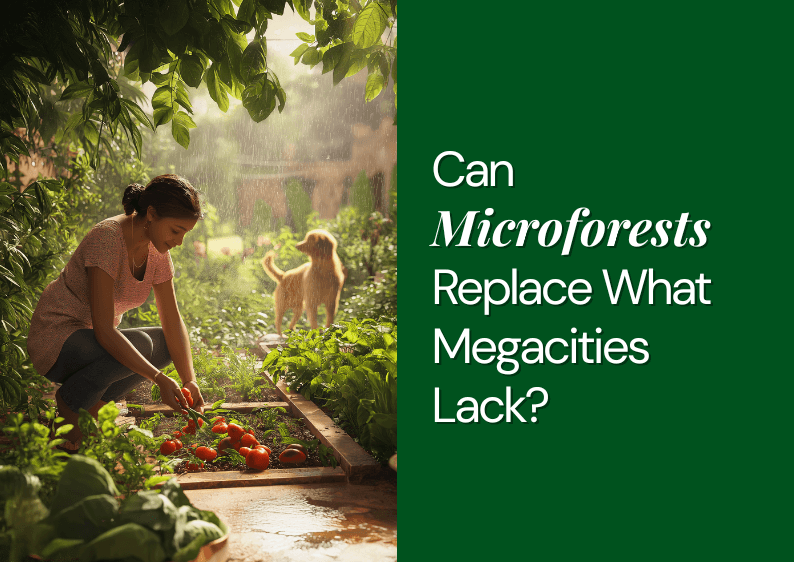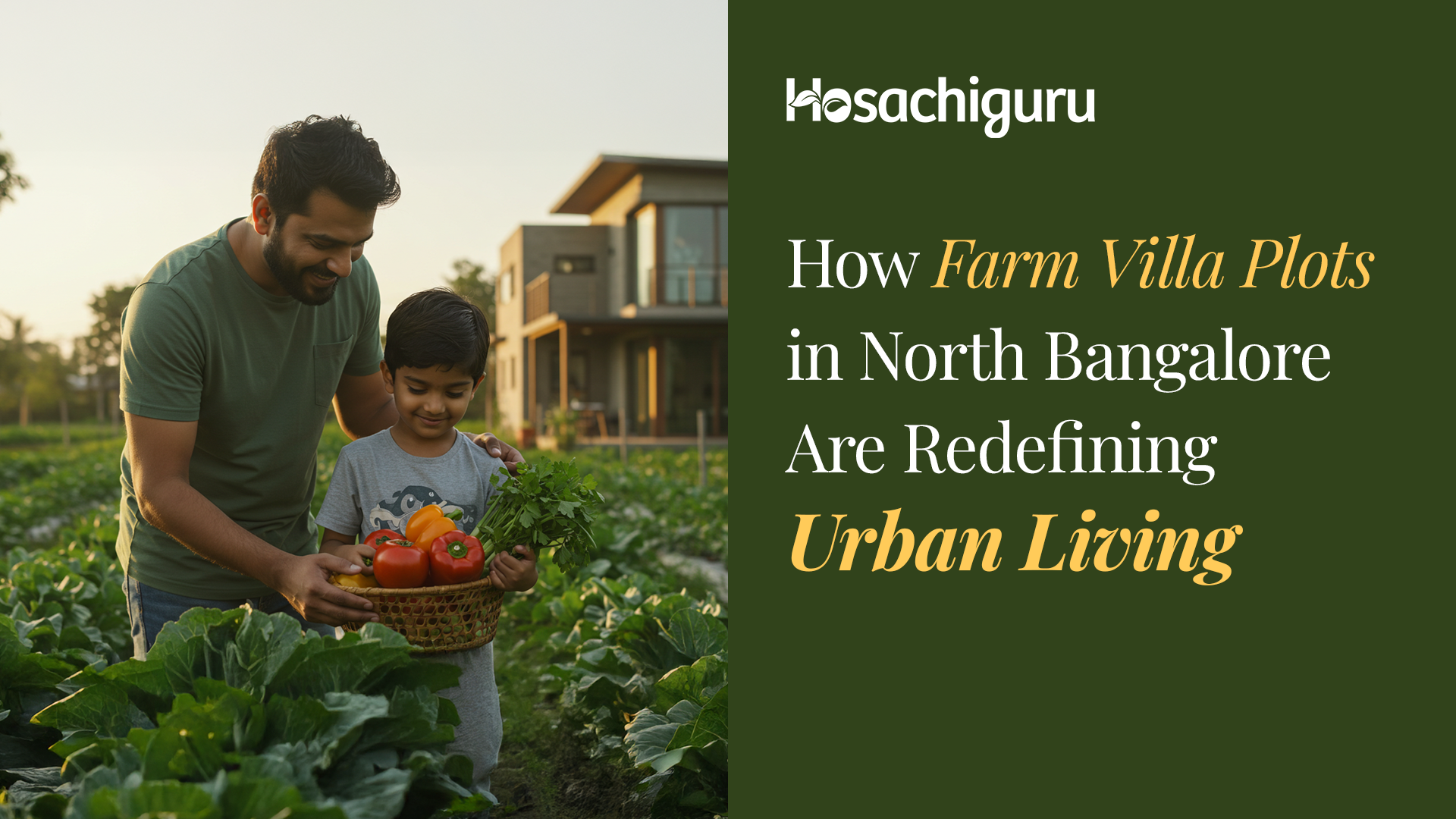November 28, 2023
Author – Srinivas Abhilash
4 Min Read
Introduction
The soil might seem ordinary, but it’s vital for life. Good soil is a harmonious blend—40% sand, 20% silt, and 40% clay that holds water and air. We can’t change its main parts, but we can improve it by adding stuff like compost or wood chips. This organic matter gets broken down by the soil food web, forming crumbs or aggregates that enhance soil texture hence making it healthy.
The soil around the world is getting worse. About one-third of Earth’s land is damaged due to industrial and chemical farming and other extractive human activities. The growing population and changing diets demand more food, putting huge pressure on the soil. To produce more crops on limited land and save water, farming practices have intensified, causing serious soil issues.
Good soil is full of life. For it to earn its title, it requires living organisms. Teeming with various life forms such as microbes, tiny creatures, arthropods, and worms, it aids plant growth and sustains soil health. Additionally, it contains organic matter, creating a crumbly, nourishing environment essential for plant life.
We need to change how we treat the soil. We need to raise awareness about the importance of soil and how we manage it. Better soil practices can improve food production and help regulate the climate. We should stop relying so much on harmful chemicals like fertilizers and pesticides. Instead, we need to focus on creating and caring for healthier soils to stop land degradation and revive our land.
If we don’t grow good, better soil filled with life, we will not be able to grow nutritious food for future generations. Ignoring soil health means risking our food quality. It might even lead to us eating lab-made food instead of fresh, nourishing produce. We have to start taking care of our gardens and farms to build better soil for better food and better health. It’s not just an option, it’s necessary for a sustainable future. Let’s explore how to cultivate healthy soil for a brighter future.
The Role of Plants in Soil Enrichment
Plants play a vital role in shaping and maintaining healthy soil. Through photosynthesis, they convert sunlight, carbon dioxide, and water into sugars, nourishing soil microorganisms around their roots. As plants shed organic matter, it enriches the soil, creating humus—a crucial form of stable soil carbon.
This process of carbon sequestration is essential for building quality topsoil. Plants absorb carbon dioxide, converting it into sugars that feed soil life. As plants grow and decompose, they contribute organic matter to the soil, boosting fertility. Humus, formed from decomposed organic matter, not only enriches the soil but also stores carbon, helping to reduce its release into the atmosphere.
Soil is more than a seedling bed. It’s our planet’s third-largest carbon reservoir, after oceans and fossil fuels. This vast, carbon-storing, water-preserving, organic matter-recycling, life-supporting entity blankets roughly 30% of Earth.
Microorganisms, such as bacteria, fungi, protozoa, and nematodes, form a diverse community in healthy soil. They work together to break down organic matter, releasing vital nutrients for plants. This nutrient cycling supports sustainable plant growth and contributes to overall soil health.
Step-by-Step Guide to Growing Soil
1.Assess Your Soil
- Before starting, assess your soil’s current condition. Perform a soil test to determine pH levels, nutrient content, and texture. Understanding your soil’s composition helps tailor soil-building strategies.
2.Add Organic Matter
- Incorporate organic matter to enhance soil fertility. Compost, well-aged manure, leaf mold, and cover crops are excellent sources. Spread a layer of organic matter and mix it into the topsoil to improve structure and nutrient content.
3.Mulch Application
- Apply mulch to retain moisture, suppress weeds, and gradually enrich the soil. Mulching with organic materials like straw, wood chips, or grass clippings protects the soil from erosion and adds organic content as it decomposes.
4.Practice No-Till Gardening/Farming
- Minimize soil disturbance by practicing no-till gardening/farming. Tilling disrupts soil structure and beneficial microorganisms. Instead, use mulch and compost to nurture soil life without disturbing its natural balance.
5.Rotate Crops
- Implement crop rotation to prevent nutrient depletion and pest buildup. Rotate different plant families annually to balance nutrient uptake and promote soil health. This practice also reduces the need for synthetic fertilizers and pesticides.
6.Composting
- Start a compost pile to recycle organic waste. Composting kitchen scraps, yard trimmings, and paper products creates nutrient-rich compost. Turn the pile regularly to accelerate decomposition and produce rich soil amendment.
7.Embrace Permaculture Practices
- Adopt permaculture principles by creating diverse and self-sustaining ecosystems. Plant guilds, utilize companion planting, and establish symbiotic relationships among plants to enhance soil health naturally.
8.Encourage Soil Biota
- Promote soil biodiversity by fostering a habitat for beneficial organisms. Worms, beneficial insects, and microorganisms contribute to nutrient cycling and soil aeration. Avoid using chemical pesticides that harm these vital organisms.
9.Water Mindfully
- Practice mindful watering to maintain soil moisture without waterlogging. Deep, infrequent watering encourages deep root growth and prevents soil compaction, fostering healthy soil structure.
10.Monitor and Adapt
- Regularly monitor soil health by observing plant growth and conducting periodic soil tests. Adapt your soil-building techniques based on observations, climate changes, and plant needs to improve soil quality continuously.
By following these steps and incorporating sustainable practices, you can progressively build healthy, nutrient-rich soil for your garden, farmland, or landscape.
Conclusion
In the quest to build healthy soil, understanding the pivotal role of plants in soil formation serves as the foundation. Implementing sustainable practices like incorporating organic matter, fostering biodiversity, and embracing regenerative methods enriches the soil, ensures long-term fertility, and contributes to environmental stewardship.
Nutrient-rich and thriving soil actively absorbs carbon from the atmosphere, retains water to prevent flooding, exhibits resilience against drying, and provides plants with essential nutrients while managing diseases and pests. Over time, it continually enriches itself through the organic matter derived from the diverse life forms within it, essentially functioning as a perpetual composting process.
Let us remember, that healthy soil is the bedrock of successful gardening, clean farming, sustainable agriculture, and environmental conservation. By nurturing the soil, we not only enhance our immediate surroundings but also contribute to a healthier planet. Whether you have a small garden, front yard, backyard, or farmland, prioritize soil cultivation using the aforementioned principles for improved food, better health, and a brighter future.














































































































































































